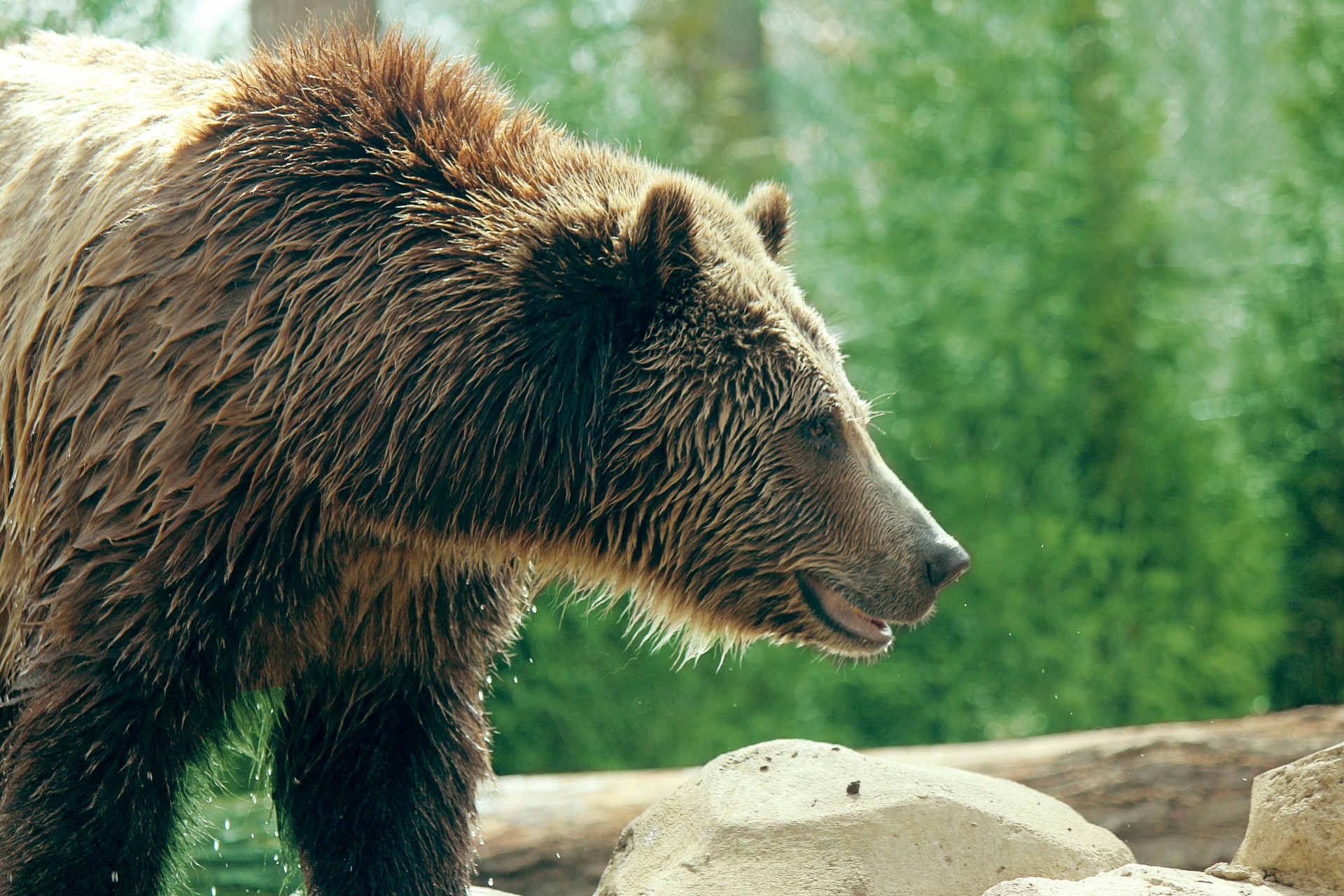
Grizzly Bear Profile
Photo Attribution: Lilla Frerichs, CC0 Public Domain
Introduction
Grizzly bears (Ursus arctos horribilis) are protected as a threatened species in the lower 48 states, making it illegal to harm, harass, or kill a grizzly bear unless in defense of human life. Environmental changes that accompany construction, maintenance, and use of railways can attract bears via spilled grain from hopper cars and the enhanced availability of carrion and vegetal foods along the tracks. Train strikes account for 9% of grizzly bear deaths during the 1997-2013 period, nearly 1-in-10 bears that died. Private organizations may apply for an “Incidental Take permit” (Section 10 of the Endangered Species Act) which allows the take (harass, harm, pursue, hunt, shoot, sound, kill, tap, capture, or collect) of a threatened or endangered species during an otherwise lawful project. Section 10(a)(2)(A) of the Endangered Species Act requires that organizations applying for Incidental Take permits must submit a habitat conservation plan that specifies 1) the likely impacts the from the incidental take, 2) the steps that will be taken to minimize and mitigate such impacts, and the funding to support such steps, and 3) what alternative actions are possible and reasons why they are not being used.
Comment Letter
February 8th, 2021
Stephen Small,
Assistant Regional Director,
Ecological Services,
Mountain-Prairie Region.
Re: Proposed Incidental Take Permit, Habitat Conservation Plan and Categorical Exclusion for the Threatened Grizzly Bear (in Montana). U.S. Fish and Wildlife Service. Public Comments Due 2-11-21
Dear Mr. Small:
The Environmental Review Workshop has reviewed the U.S. Fish and Wildlife Service Incidental Take Permit Application (ITP), Habitat Conservation Plan (HCP) and Categorical Exclusion (CE) for the federally listed Grizzly Bear (Ursus arctos horribilis). We do not agree that the HCP fits the criteria for a CE as the minimization and mitigation measures proposed in the HCP are not sufficient so as to result in negligible effects to the species. We request that USFWS conduct an Environmental Assessment in place of the CE, and offer the following comments in support of our position:
1) Federal Fish and Wildlife Permit Application Form, Page 3. Section 10(a)(2)(A) of the Endangered Species Act states the Incidental Take permit cannot be given unless the HCP specifies “(iii) what alternative actions to such taking the applicant considered and the reasons why such alternatives are not being utilized;”. Such alternative actions are not mentioned in the HCP, thus it is not appropriate for the Incidental Take permit application to be accepted.
2). HCP, Section 2.0 “Effect of the Incidental Take”, Page 9. The rate of human caused mortality is increasing and there is no evidence that this rate will equal the population growth rate of the grizzly bear population.
3). The proposed mitigation measures do not include strategies such as reducing train speeds, using lights and noise to warn wildlife, and changing train schedules to minimize night time travel.
a. HCP, Section: 1.0, H. “Avoidance and Minimization”, Page 4. The grain car briefing procedure should be included in this plan. The details for how grain car inspections will be conducted and how they will contribute to less attractants being spread on the track should be explained.
b. HCP, Section: 1.0, I. “Compensatory Mitigation Measures”, Page 6. What is the reasoning for only 2 MFWP and 1 Blackfeet Indian Nation technician? Provide support that 3 additional workers is sufficient. Provide methods to track the number of training sessions and establish a mandatory minimum number of sessions.
c. HCP, Section: 1.0, I. “Compensatory Mitigation Measures”, Page 6. The plan for using the collars to mitigate bear take should be detailed in the HCP. The plan for using remote cameras to mitigate bear take should be explained in the HCP.
d. HCP, Section 2.0 “Effect of the Incidental Take”, Page 11. The HCP is intended to reduce the number of grizzlies killed each year by BNSF, but this number permits more killing of more grizzly bears per year (2.6) than have been killed annually on average during the last several decades.
4). The proposed funding is not specific as to amount, duration and distribution.
a. HCP, Section: 1.0, I. “Compensatory Mitigation Measures”, Page 6. Plans for funding for bear collar and remote camera need to be specified.
b. HCP, Section 2.0 “Effect of the Incidental Take”, Page 11. Reserve fund distribution and use is vague. The use of the funds should be properly detailed as to how it will minimize and mitigate impacts.
Due to the above noted deficiencies in the HCP, the issuance of a CE is not appropriate. We respectfully request that USFWS conduct an Environmental Assessment to ensure that mortality of the Grizzly Bear population from BNSF operations is reduced, rather than maintained.
When responses to these comments are available, please email those or notify us where they can be viewed if they are posted for public viewing on your website.
Sincerely yours,
Guy Burke
Environmental Reviewer (Associate in New York)
Environmental Review Workshop
(Environmental Review, Inc., a 501(c)(3) Nonprofit Public Benefit Corporation)
Janet Fox
Senior Reviewer (Associate in Arizona)
Environmental Review Workshop
(Environmental Review, Inc., a 501(c)(3) Nonprofit Public Benefit Corporation)
References: David J. Mattson. “Effects of Trains and Railways on Grizzly Bears.” https://bit.ly/39SWZN8